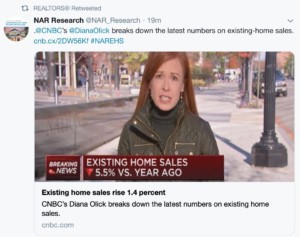 It is that time of year again when budgeting for next year takes hold of your company. There were a few economic indicators released by First American and by the National Association of REALTORS® which provide some very interesting economic truths that need to be factored into your forecasts – especially when they are factored together. Our advice to brokers and to the technology companies that serve them is to cut fixed costs by 15%.
It is that time of year again when budgeting for next year takes hold of your company. There were a few economic indicators released by First American and by the National Association of REALTORS® which provide some very interesting economic truths that need to be factored into your forecasts – especially when they are factored together. Our advice to brokers and to the technology companies that serve them is to cut fixed costs by 15%.
First American Chief Economist has developed the First American Real House Price Index (RHPI). It measures price changes for single family residences adjusted for income and interest rate charges. It is a pretty simple concept. As home prices go up, the number consumers with purchasing power to buy them goes down.
According to First American, prices went up by 2% between August and September of 2018. It annoys me that it takes the whole month of October and 26 days of November to look at economic data from September. There is enough MLS data to sort this out on October 1st if only our MLSs could agree to work together, but that is another story. First American reports that year over year prices increased 15.3%.
What First American fails to connect is the impact that the RHPI has on volume – specifically unit volume and dollar volume. When you think about forecasting for real estate brokerages, dollar volume is the key metric. For brokers with ancillary service companies (mortgage, title, insurance, etc.), unit volume also plays a key factor. Thankfully, the National Association of REALTORS® is tracking these numbers, which are vital to budgeting and forecasting.
 The National Association of REALTORS® indicates that existing home sales are down 5.5% over a year ago. The unit volume is 5.22 Million. Moreover, Realtor confidence level is at a 4-year low and that the outlook is at a 6-year low.
The National Association of REALTORS® indicates that existing home sales are down 5.5% over a year ago. The unit volume is 5.22 Million. Moreover, Realtor confidence level is at a 4-year low and that the outlook is at a 6-year low.
The good news is that the growth in prices was the lowest since June of 2014. Inventory is also up 2.8% to a 4.3-month supply.
The magic ratio that can be used in forecasting your budget for 2019 is 15.3 to 5.5. For every 15.3% rise in prices, you will see a 5.5% decrease in volume. If you are a large brokerage firm doing billions in trades, use the decimals because the differences can be meaningful. For most brokers, you can reduce the ratio to 3 to 1. For every 3% rise in housing, you will see 1% decrease in volume.
Be sure to watch interest rates. The net effect calculated by the First American RHPI is that consumers could afford $26,000 less house. The current average home trade is $255,000, so $26,000 is pretty significant. Think about the gap – a 15% increase in price is about $33,000 plus the drop of affordability of $26,000 gives you a gap of $59,000 to cover. This gap will widen even more if the fed goes forward with .25% rate hike. Unemployment is holding steady at 3.7% and wage growth is 3%. Corporate profits have been strong at 17.5% but economists are forecasting a sell off and 9.3% profits for 2019.
Some Suggestions:
If you are a brokerage or technology company that is looking for a target number for cutting fixed costs, you may want to target 15%.
If your business has strong reserves, it’s time to go out acquire competitors. Specifically, look to acquire in areas where you have offices that are losing money and that are underutilized with agent count. Find competitors who have similar cultures and business concerns.
If you do not have strong reserves, sell your neutral or underperforming offices and shore up your balance sheet.
Find growth though new agent recruiting. This is favorable at this time when recruiting existing or top producing agents in a shrinking market does not impact broker dollar significantly.
Office managers have significant impact on brokerage performance. It’s time to release your underperforming managers and hire the best.
Technology companies should be very cautious on 2019 forecasts. As days on market increases and unit volume slows, free cash flow for brokers and agents will be impacted. Agent spending on advertising should remain steady as sellers will expect that from their agent. If your technology product is a vitamin rather than a pain killer, forecast lower sales or lower prices. Agents will be cancelling non-vital expenses and so will brokers.
Associations and MLSs have seen growth in the number of agent members/subscribers over the past cycle. Expect agent count to remain neutral or decrease slightly in 2019.
If you need help with your 2019 plan or want an outsider perspective, contact WAV Group. It typically takes us a day or two to review and provide suggestions.




